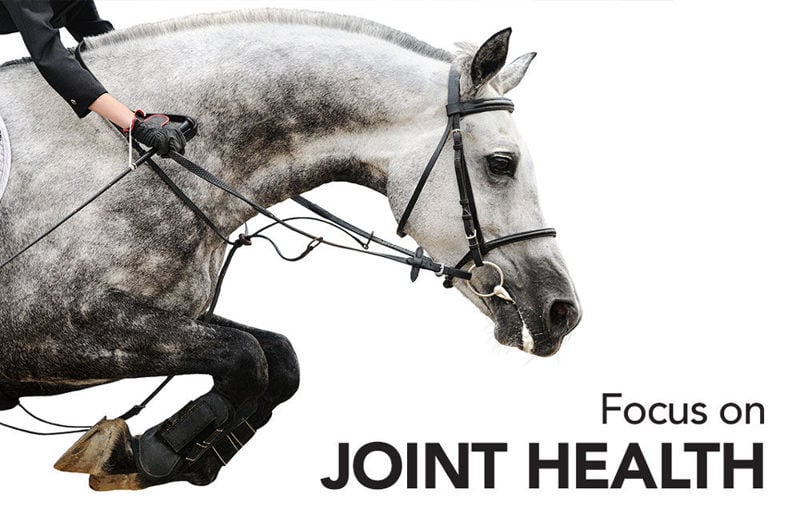The way we manage our horses can have a great effect on the health and function of their joints throughout their lifetime.
Due to a poor design, horses have relatively small joints in comparison to their body size, so a lot of pressure is put upon these joints. However, we see more issues in the domesticated horse than its feral counterpart, suggesting that the way we look after our horses can increase the risk of joint degeneration/injury.
By asking our horses to gallop, jump, slide, and perform collected dressage moves we cause additional stress. In the other extreme, many horses are overweight, and this also puts greater strain on joints.
Young and healthy joints work smoothly, as the ends of the bones are covered in articular cartilage, which protects the bones and reduces friction. This cartilage helps to spread pressure over a larger area, rather than it being highly concentrated, by acting a little bit like a sponge, changing shape by squeezing out water when pressure is put on, and absorbing it back in when pressure decreases. Cartilage is constantly being regenerated, but the rate of turnover reduces as the horse gets older.
In addition to the cartilage, joints are further protected by a capsule which has a tough outer layer, which connects to the bones, offers protection, and is filled with synovial fluid that provides lubrication, and nutrients. Synovial fluid contains Hyaluronic Acid, which has an important role as a shock absorber, and water, proteins and enzymes are also present, which can pass to and from the blood supply to the joints.
The most common cause of damage to the cartilage is inflammation - a natural response to injury from the body. This occurs when cells are damaged, releasing chemical signals which then trigger a reaction where blood vessels dilate causing heat and reddening and fluid and cells are leaked into surrounding tissues.
This inflammation causes changes in the composition of synovial fluid, and cells in cartilage do not receive the nutrients needed to function effectively, so the repairs that would normally occur in healthy cartilage do not, and the cartilage becomes damaged, which means that joints start to lack protection. To help keep your horse’s joints healthy, follow a few simple guidelines.
• Try to maintain a correct body weight.
• Use a qualified, competent farrier.
• Be aware of the damage that can be caused by working on hard or uneven ground.
• Warm up sufficiently before asking for hard work.
• Make sure you provide correct nutrition for your horse, and if you like feed a good quality supplement to support optimum joint health.
For any advice or questions you may have, please don't hestiate to reach out to our expert nutrition team. You can call 0800 585525 Monday-Friday 8:30am-5:00pm. Email [email protected], or send us a DM on social media.


